
Lifetime achievement award: Otmar Issing
Architect of euro’s framework still playing important role in shaping debate on monetary policy
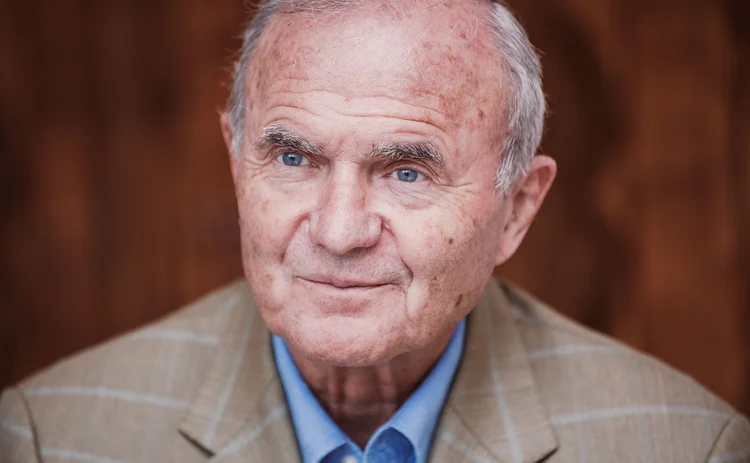
The euro commemorated its twentieth birthday on January 1 last year. Its creation ensured payments in France, Italy, Germany and Spain could be made in a single currency for the first time since the days of the Roman denarius. The euro has now successfully emerged as the world’s second most important reserve currency. But this status was far from guaranteed. Securing a stable currency zone without fiscal or political union required meticulous planning and sound monetary judgement. The success of the project’s implementation is due in a large part to the efforts of one man: Otmar Issing. And in a year when the European Central Bank (ECB) is conducting a strategic review of its monetary policy, Issing’s work is just as relevant today as it was two decades ago.
Issing was born in Würzburg, a north Bavarian university city known for its baroque and rococo architecture, in 1936. He was a boy during the Second World War and, as a young man, studied classical languages and then economics. He also travelled extensively in Europe, embracing cultures he had been warned against by some of his schoolteachers. Issing, a believer in free markets, became increasingly convinced of the need for further European integration. He continued pursuing his academic career in economics and by 1967 secured a full professorship at the University of Erlangen-Nuremberg, where he was also director of the Institute for International Economic Relations. Six years later, Issing returned to his home town, when he became professor of economics, monetary affairs and international economic relations at University of Würzburg, a post he held until 1990.

During his academic career, Issing became a foremost expert in central banking monetary policy. In particular, he published two seminal textbooks: Einführung in die Geldtheorie (Introduction to Monetary Theory), first published in 1974 (15th edition in 2011), with translation into Bulgarian and Chinese, and Einführung in die Geldpolitik (Introduction to Monetary Policy), first published in 1981 (sixth edition in 1996). These books quickly became part of the core syllabus for generations of German economics students, including many of the top members of the Deutsche Bundesbank. Issing had a knack for being able to effortlessly switch between analysing and understanding the finest detail of technical issues to communicating these complex topics to a generalist audience in a clear and engaging manner. This made him an excellent communicator on economic affairs, facilitating his membership of the Economic Advisory Council at the Federal Ministry of Economics from 1980, where he became deputy chairman in 1988, the same year he also joined the German Council of Economic Experts – an apex advisory body steering the nation’s overall economic development.
New rigour at the Buba
In October 1990, Issing was recruited to the Deutsche Bundesbank as a member of its executive board. He had overall responsibility for the areas of economics and statistics and also sat on the Central Bank Council, the body responsible for German monetary policy decisions. Issing described his task to European parliamentarians as covering “the entire field” and says he needed to “incorporate” the results of his work “into the decision-making process in connection with monetary policy”. Ultimately, he presented the economic analyses to the council, ending with a proposal on the monetary policy decisions to be taken.

Issing set about bolstering academic rigour at the Bundesbank in a bid to support policy debates as well as the day-to-day work of its economists, notably establishing a new research unit at the German central bank. “He is the founding father of our Research Centre,” Jens Weidmann, president of the Deutsche Bundesbank, tells Central Banking. “He established a rotation principle that enabled economists to withdraw for some time to the Research Centre and engage in some deeper thinking or to refresh their economic knowledge. It was one of the many marks he left on the bank.”
Issing’s own analytical skills were called upon almost immediately upon joining the Buba’s board due to the reunification of West Germany and East Germany that took place on October 3, 1990. The two economies were at markedly different stages of development, with West Germany being far wealthier and more developed than its counterpart. Due to uncertainty about East German data and the economic behaviour of its citizens and companies, it was unclear at the time whether the Bundesbank should continue with its public strategy of controlling the money supply, something it had been doing since the 1970s.
“On the one hand, all the possibilities offered by scientific methods of analysis had to be exploited; on the other, the right conclusions for monetary policy had to be drawn on the basis of what was necessarily incomplete knowledge of the processes then at work and the economic behaviour of Germany’s new citizens,” Issing told the European Parliament’s Committee on Economic and Monetary Affairs and Industrial Policy in 1998 when reflecting on the matter. “The decision to institute the first money supply target for the united Germany was anything but obvious. With hindsight, in the view of the vast majority of experts it has been proved correct.”
Speculative attacks on the EMS
The unique challenges faced during reunification had a distortive effect, with German interest rates set by the Bundesbank rising to counteract inflationary effects related to excess expenditure.
“Monetary expansion not least due to the favourable exchange rate for the people of the former German Democratic Republic, rising inflation, a dramatic swing in the balance of payments and huge deficits in the federal budget, were factors threatening the long-established stability,” Issing explains to Central Banking.
“Being complacent to these developments and giving in to existing political pressure would have strongly undermined the stability culture and confidence of global investors in the Deutschmark with the consequence of higher long-term interest rates and increasing public deficits. Carefully considering different options, I suggested to the council to raise our interest rates. My proposals were accepted by an overwhelming majority.”

This rise in rates, in turn – although mitigated by increased German imports for French and Italian products in particular – caused significant stress for other European countries that were striving to keep their exchange rates within a range compared with the Deutschmark. Tight German monetary policy contributed to the humiliating withdrawal of sterling from the Exchange Rate Mechanism (ERM) due to a run on the pound.
The ERM was introduced to support exchange rate and broader economic convergence in Europe. But it imposed obligations on its members (the UK became a formal member in 1990), whose central banks increasingly tracked Bundesbank monetary policy. But in mid-1992, most currencies either had to be devalued against the Deutschmark and forced to fluctuate within 30% margins or, like the UK, leave the ERM altogether. The Bundesbank was criticised at the time for being inflexible and not adopting policies to help other central banks in the ERM. However, it lacked a mandate for a European response strategy and was reluctant in its role as setting monetary policy for ERM nations.
Disciplined discretion
While Issing was keen to harness statistical techniques based on extensive data gathering, and favoured monitoring money supply, he did not appear to slavishly follow such approaches to the exclusion of all others – discretion was also important. This was highlighted in 1996. During the first few months of that year, the money supply in Germany was expanding beyond the upper limit of the target band (4–7%) for that year. But many other indicators pointed to low inflation combined with relatively weak economic growth. As a result, the Central Bank Council decided to cut Germany’s discount and Lombard rates by 50 basis points. “The accompanying explanation, which included a forecast that the growth in the money supply would slow down, convinced the public and the financial markets, as the expert comment and market reactions at the time illustrated,” Issing told European parliamentarians in 1998.

Adam Posen, now president of the Peterson Institute for International Economics, characterised German monetary practice at around this time as “disciplined discretion”. “Disciplined discretion means a system of commitments to publicly clarify the intent and stance of monetary policy with respect to the announced goal on an ongoing basis, but freedom to set policy so long as those commitments are met,” said Posen in a 1997 working paper. “The German experience with monetary targeting leads me to conclude that it is not necessary to bind central banks’ hands tightly (say by a fixed exchange rate, gold standard, or a specified rule) in order to sustain low inflation. It is crucial, however, that the central bank achieves transparency by stating its goal and provide structured accountability with respect to its meeting that goal. The Bundesbank also teaches us that flexibility and low inflation need not be in conflict.”
Issing himself tells Central Banking: “From the beginning I supported the Bundesbank policy of ‘pragmatic monetarism’. By ‘true’ monetarists, I was personally criticised as being in favour of ‘discretion’; by those in favour of ‘pure discretion’, I was blamed as a ‘monetarist’.”
Towards Emu

In the years before and after the collapse of the Berlin Wall, another momentous event was in full swing: the move toward Economic and Monetary Union (Emu). Notably, in June 1988 the European Council asked a committee chaired by the then president of the European Commission, Jacques Delors, to propose a concrete timetable with clear steps to create monetary union. The committee included the governors of the European Community’s 12 national central banks as well as Alexandre Lamfalussy, general manager of the Bank for International Settlements. The resulting Delors Report in 1989 put forward a three-stage approach toward Emu.
There was much debate about the wisdom of Emu and how it should be implemented. At the time, many economists in Germany favoured a move towards monetary union via a ‘coronation model’ – the so-called ‘economists view’. This emphasised the co-ordination of economic policies and advocated for a long convergence process to favour an alignment of monetary policies. Many French economists and others favoured a ‘monetarist view’ that favoured greater exchange rate stability and exchange rate support mechanisms.
Importantly, Germany’s then chancellor, Helmut Kohl, who lost his brother during the Second World War, strongly favoured Emu as a mechanism to help to prevent another generation of Germans potentially turning towards nationalistic policies. And Kohl was keen to grasp the opportunity while he could. Central bank governors pressed for operational independence to pursue price stability for the eurozone’s new central bank as the price for their support of Emu. There are accounts that leading central bankers made the demand believing Europe’s political leaders would baulk at it, and this would slow down the pace of monetary integration. If that was the case, they appear to have misjudged the political resolve for monetary union at that time.
The birth of the euro
Issing was an advocate of the ‘economists view’ that monetary union should be a final step in a long process of European integration. He told Central Banking in 2016 that “as an economist”, he was wary of the decision “taken unanimously by 11 governments and ratified by 11 parliaments, in some cases accompanied by referendums”, to embark “on a highly ambitious act” towards Emu. But as a central banker he “had to accept this political decision to create a monetary union and to abandon national currencies”. “The role of the central banks – independent of government or not – is to make the best out of the political decisions,” Issing said. “So, at the Bundesbank, we prepared for the start of the euro as much as we could.”
His work at the Bundesbank had attracted plenty of attention. So, when French and German political leaders steered clear of naming one of their own citizens as the first president of the ECB, with Wim Duisenberg taking the role for an abridged five years, Issing’s boss at the Bundesbank, Hans Tietmeyer, made a strong case for Issing to be put forward by Germany for the chief economist role on the ECB’s board. “He wanted to get Germany’s best economist to work on Emu,” says Weidmann. “Germany wanted to send the strongest monetary economist to the ECB to shape thinking there.”
The role of the central banks – independent of government or not – is to make the best out of the political decisions. So, at the Bundesbank, we prepared for the start of the euro as much as we could
Otmar Issing
Despite Issing’s reservations about a fast track to Emu, the position appears to have appealed for at least two reasons: First, Issing felt a sense of duty – both as a European citizen and as a central banker – to support efforts towards European integration. Since a political decision had been taken to move Emu forward at a fast pace, it was important to make the euro work as best it could. In 1990, Issing told a European Parliamentary committee that his “abiding impression” of monetary union predated his study of economics. He recounted the journey of a merchant setting off from Rome in the first century AD to modern-day Cologne, noting “he was able to pay all his bills, wherever he stopped” with Roman denarii. “The Pax Romana provided political cohesion, and the natural scarcity of money guaranteed the stability of the currency,” Issing said. Second, the ECB role represented a unique intellectual and functional challenge. As Issing told Central Banking: “It was the greatest challenge facing any central banker. Designing the framework for the monetary policy of a new common currency for 11 countries had never been done before.”
His sentiment on the topic was little changed from more than two decades earlier, when he said: “To be involved in forging the new single currency is the most fascinating task with which an economist can be entrusted. I believe that after a career in which I have combined the study of economics with practical experience in a key post with a by no means unimportant central bank, I can make a contribution to the success of this historically unique venture. In any event, I am prepared to devote all my energies to that end.”
And, so he did.
The ECB’s first chief economist
Issing was soon confirmed to the inaugural board of the European Central Bank, where he would run two departments as well as becoming the ECB’s first chief economist. He joked that while Duisenberg forbade him an ECB office with a view of the Bundesbank, he otherwise gave him his full support. “Duisenberg not only gave me responsibility for two directorate generals, economics and research – the core of central banking – he also gave me the freedom to do what I thought was appropriate,” Issing said.
Issing told Central Banking that he knew introducing the euro to 11 heterogeneous countries was “highly risky” as nobody was sure how savers, investors and financial markets would react. Even at a practical level, trying consistently to aggregate national statistics “was a nightmare”. He also believed the policy target adopted by the ECB of 2% inflation or below was “quite aggressive”, noting that the Bundesbank’s average was 2.8%. While the rate was criticised by academics, ultimately it was accepted by the public and those operating in the financial markets.

Two-pillar approach
The ECB’s monetary framework involved a quantitative definition of price stability (a yearly increase in the Harmonised Index of Consumer Prices (HICP) of the euro of below 2%, its inflation target) combined with a thorough analysis of economic developments. The ECB’s approach to organising, evaluating and cross-checking information relevant for assessing the risks to price stability was and (largely) remains based on two analytical perspectives – the ‘two pillars’ of monetary analysis and economic analysis, established by Issing. These formed the basis for the governing council’s overall assessment of the risks to price stability and its monetary policy decisions.
“As the chief economist at the ECB, I strongly argued against a Bundesbank-like monetary target, but also pleaded for an important role of a broad based monetary analysis – hence the ‘two pillar’ strategy,” Issing tells Central Banking.
The ordering of the ‘two pillars’ was changed in 2003 to start with the economic analysis, focusing on recent developments and the short to medium-term outlook, and follow this with analysis of monetary developments related to risks to price stability in a medium to long-term perspective. This reversal of order was done as the relationship of specific monetary aggregates to prices, which appeared to have been reliable in the past, had become unstable due to financial innovation and other factors. “What we are then doing is cross-checking information from the two pillars. We ask: ‘What are the indications as to the risks to price stability from the economic analysis, which means short term to medium term, and what is the information coming from money and credit, which is more relevant to the medium to long term?’,” Issing said in 2004.
Weidmann – the longest serving governor on the ECB’s governing council – tells Central Banking that much of the approach Issing set up during his time at the ECB is still largely followed in governing council meetings today.
The key messages from monetary policy theory which emerge through the lens of my professional experience can be stated as follows: don’t try tricks, don’t try to be too clever
Otmar Issing
“As in the Bundesbank’s case, the ECB’s approach involves both rule-like features, consistent with the results of monetary theory, and an attention to central banking experience in the implementation phase,” Issing said in his book Imperfect Knowledge and Monetary Policy, co-authored with Vitor Gaspar, Oreste Tristani and David Vestin (2005, pages 75–76). “The key messages from monetary policy theory which emerge through the lens of my professional experience can be stated as follows: don’t try tricks, don’t try to be too clever; keep steady, keep committed to your mandate even in exceptional circumstances; say as much as you can of what you are going to do: announce a strategy; don’t be dogmatic, but follow a policy which is always in line with your strategy.”
Vitor Gaspar and Anil Kashyap added in Stability first: Reflections inspired by Otmar Issing’s success as the ECB’s chief economist that Issing believes that in the conduct of monetary policy: institutions matter, credibility is paramount and there is a need to resist temptation. This means central bank independence and a mandate for price stability are crucial prerequisites for success – something Issing stressed to UK prime minister Margaret Thatcher long before the Bank of England secured its own operational independence.
Issing also holds that central banks provide “the premises” to establish credibility, to anchor inflationary expectations, and “ultimately deliver price stability and foster a stable macroeconomic environment”, Gaspar and Kashyap said, but the German economist stressed that moral responsibility and strength of character are fundamental in the face of economic complexity and change. Issing has repeatedly stated that central bankers must “never forget this message” or “take credibility for granted” even at times when prices are stable. “Credibility is hard to gain, but it is easily lost. To be maintained, it requires continuous vigilance. If lost, it can be regained only at high costs to society,” Gaspar and Kashyap said in reference to Issing.
Euro debut
The euro came into effect on January 1, 1999, six months after the formal founding of the ECB. At the time, the roll-out of the single currency for the eurozone was far from guaranteed. Milton Friedman had written to Issing congratulating him on “an impossible job” at the ECB. But as a result of the work carried out by Issing and his team, the introduction of the euro was almost seamless. It was widely lauded as a great success. “An observer from Mars would not have seen anything unusual from the data between December 1998 and January 1999. Nothing happened. There was no shock visible in the data,” Issing himself told Central Banking in 2016.

During the early years of the euro, the single currency quickly gained the confidence of investors in the eurozone and worldwide, as demonstrated by consistently low inflationary expectations. Its introduction was one of the most significant events in the post-war history of the international monetary and financial system. But even early on, there were concerns that governments were not holding up their end of the bargain.
Speaking in 2004, Issing said: “So the monetary part of Emu – economic and monetary union – has worked well. However, as I said before, to make monetary union really work as efficiently as we all wish, we need greater flexibility in labour markets and more deregulation generally. Governments have committed themselves to this agenda, with the aim of making Europe the most dynamic region of the world. But we cannot claim that we are on schedule. So, we have achieved price stability, which is the central bank’s task, but the euro area has not been able to exploit its potential to the full.” Issing had become deeply frustrated by the failure of eurozone states to adhere to the Stability and Growth Pact – the fiscal compact that helped to underpin the monetary system. In a Central Banking interview in 2004, he said he was “very disappointed” by Germany’s decision to violate the rules.
Nonetheless, Issing left the ECB in 2006 on a high, leaving a legacy that lasts to this day. He is still warmly received at ECB events, including the recent leaving parties for Benoît Coeuré and Mario Draghi. This is noticeable by contrast to his compatriot Jürgen Stark, who immediately succeeded Issing as chief economist but resigned in 2011 due to his concerns over the ECB’s buying of Greek, Irish and Portuguese bonds in 2010 and then those of Spain and Italy via its Securities Market Program. Andreas Dombret, himself an alumnus from the Bundesbank board who also sat on the ECB’s SSM board, says Issing is held in extremely high regard “in all circles”. “I constantly hear people saying to him what an honour it is for them to meet him,” says Dombret.
This is in part due to his academic contributions to monetary policy, his work creating robust economics and research departments at both the ECB and the Bundesbank, and in part due to his reputation as the architect of the monetary framework for the euro. It also stems from the overarching loyalty and commitment Issing made to the institutions at which he has worked. As Weidmann tells Central Banking: “One of his characteristics is his very pronounced loyalty to the institution that he is serving.” Issing served at the Bundesbank and then at the ECB to his full abilities, despite having some reservations about some of the context of his role at the latter, and remains the first and only German (out of four) to have served out a full term on the ECB board.
Issing has beliefs, but he is curious about the intellectual debate … I also find him rather modest. He is not an arrogant or a showy person at all. He is a modest, smart, intellectual, personable person
Andreas Dombret, Deutsche Bundesbank (2010–18)
Issing also always encouraged debate at the institutions he has worked for. He is extremely “personable” and many who meet him describe him as “open-minded”, says Dombret. “He has beliefs, but he is curious about the intellectual debate. It is why he spends so much time at university. I also find him rather modest. He is not an arrogant or a showy person at all. He is a modest, smart, intellectual, personable person.”
Issing has maintained this vaunted status despite expressing deep and wide-ranging concerns about developments in central banking and the eurozone during the past 12 years. His personal qualities and commitment have helped to secure this legacy. So too has his overarching goal of wanting the euro and the ECB to succeed – he has always striven to make constructive criticism.
The credit bubble
By 2008 – two years after he had served out his eight-year term at the ECB – Issing was noticeably worried with the course central banking had taken. Relatively loose monetary policies around the world combined with increasingly light-touch supervision had created the conditions for financial decoupling, with the US hit by the bursting of a huge housing credit bubble that ripped through financial markets and the banking system.
In a 2008 interview with Central Banking, Issing indicated that developments in money and credit were not being adequately analysed in conjunction with economic developments, which was part of the framework he set up at the ECB. “The results from analysing the development of money and credit were cross-checked with those from an analysis of economic data, including our forecasts for growth and inflation before making monetary policy decisions. In this respect, we were alone in the world of central banking,” said Issing. “But I never understood how a central bank could more or less ignore money and credit. This neglect has contributed to the emergence of a ‘bubble economy’ that ended in the great financial crisis in 2008.”
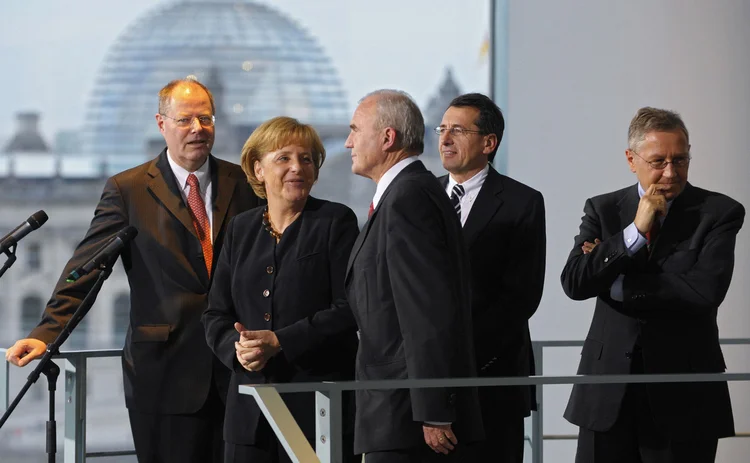
In 2008, Issing was appointed by German Chancellor Angela Merkel as head of the Advisory Group on the New Financial Order.
This resulted in Issing having personal meetings with the chancellor and the finance minister before all G20 meetings. “The chancellor was most interested in our proposal to create a risk map to indicate financial risks on a global level,” Issing tells Central Banking. “Great importance was also directed towards a misguided incentive structure for actors in financial markets being paid high bonuses for short-term success without taking into account later losses.”
Regulatory reform
At around this time, Issing also became a member of the European Commission’s High Level Expert Group on EU Financial Supervision, chaired by former International Monetary Fund managing director and Banque de France governor, Jacques de Larosière. “He played a major role in the committee that I chaired on the reform of the European Financial Supervisory System,” de Larosière tells Central Banking. “He was constructive and eager to achieve an agreement, but nothing could endanger his main conviction: monetary stability.”
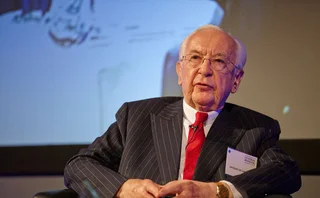
The report recommended against what ultimately became the Single Supervisory Mechanism being managed under the ECB, instead proposing a separate entity to oversee pan-European bank supervision. Such an entity would avoid potential conflicts of interest between monetary policy, financial supervision and lender-of-last-resort functions that can emerge when a central bank is rescuing a bank, the committee believed. “This is because it involves taxpayers’ money, not central bank money,” said Issing.
While the report received widespread support at the European Commission and European Council, Europe’s politicians baulked at the need to secure Treaty change. “Now the warnings in our report are coming to the fore. Conflicts with monetary policy and the problems in Italy to implement a new resolution mechanism demonstrate that our concerns were justified,” Issing told Central Banking in 2016.
Euro debt crisis
The years of artificially low interest rates and heightened state and banking profligacy in the eurozone came to a head with the advent of the twin European sovereign and banking crises in 2011 – and it is unclear whether the ECB supervisory board saw it coming. Issing, however, said the problems in the eurozone were not unexpected. “The economies of the 11 signatory eurozone countries were already out of synch. But another eight nations joined the euro, adding to even greater levels of heterogeneity,” Issing told Central Banking. Crucially, those nations that had taken tough structural reforms to meet convergence terms “did nothing after joining”, he said.
This behaviour occurred despite constant warnings from the ECB. Issing said Duisenberg’s successor as the Eurosystem central bank’s president, Jean-Claude Trichet, repeatedly warned the Eurogroup of the danger of weak fiscal policy and the need for convergence in Europe. But the politicians ignored Trichet’s advice. “There was no speed-up of convergence after 1999 – rather, the opposite. From day one, quite a number of countries started working in the wrong direction,” Issing said.
‘Fatal blow’ to Emu framework
The “fatal blow”, Issing maintains, took place back in 2003 when the eurozone’s largest nations – and the two lynchpins of European integration – Germany and France both escaped fines for violating the Stability and Growth Pact, the rules designed to ensure that countries in the European Union pursue balanced public finances. Once France and Germany (the latter had insisted that budget deficits should not exceed 3% of gross domestic product in the first place) had escaped fines due to European finance ministers overturning the Commission, there was little incentive for others to adhere to the rules. By breaching the pact and not being penalised, nations could take advantage of a common interest rate with little of the downside risks from excess borrowing. Markets – initially, at least – failed to punish them. But problems festered until, in 2011, the crisis ensued.
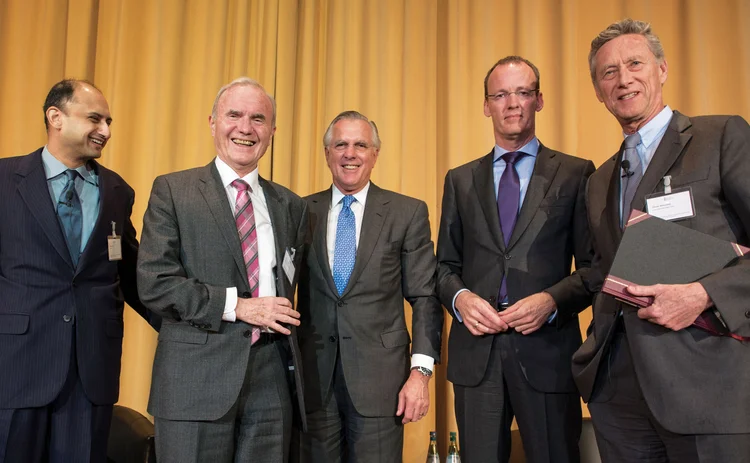
Delors himself admitted that efforts to tackle the problems in the eurozone had been “too little, too late”, with European leaders having chosen to turn a blind eye to the economic weaknesses of some member states. “Everyone must examine their consciences,” he told The Telegraph. “The pact has never recovered and is now breached frequently,” Issing stated in 2016, adding that European Commission didn’t seem to care.
Challenges to the ECB
The ECB was left in a difficult position, in many ways, due to the failures of eurozone governments. The central bank was included as part of the so-called ‘troika’ alongside the European Commission and IMF in the bailout of Greece. It was pressed to take over supervision of Europe’s largest banks, to extend extremely loose monetary policy for extended periods of time and ultimately to finance eurozone governments (albeit in the secondary markets). Each step has followed on from the other with limited movement on the part of governments to tackle the fundamental problems.
Issing has stated that instead of Greece enduring years of harsh fiscal austerity imposed by the troika to keep the country in the euro – and reduce French and German bank losses on Greek bonds – the country should have left the eurozone. He believes this could have been done in conjunction with the EU offering strong support to Greece and helping it onto a path to rejoin the single currency in due course. “It would have been better to demonstrate a country could leave the euro and rejoin from a much stronger position later. Such an event would have clarified that being a member of the ‘euro club’ can only come by meeting the club’s economic rules,” Issing said in 2016. “But this opportunity was missed.”
Monetary financing?
As Europe lurched from one crisis to another, with Cyprus, Ireland, Portugal and Spain (and latterly Italy) all suffering crises of one form or another, the ECB’s new president, Mario Draghi, moved to restore confidence in the eurozone. “Within our mandate, the ECB is ready to do whatever it takes to preserve the euro. And believe me, it will be enough,” Draghi said in 2012. Soon after, the ECB committed to outright monetary transactions (OMTs) if required. This meant the ECB would undertake outright transactions in secondary sovereign bond markets. So far, the instruments have not been used.
Draghi’s statement is often cited as the most impactful intervention by a central banker in his generation. European sovereign debt spreads soon started to converge and crisis conditions eased in Europe. But Issing, along with other German economists, argued forcefully that the ECB’s commitment to use OMTs was a “transgression by the ECB into monetary financing” (although this was not supported by Europe’s highest courts) that ultimately further undermined the independence of the ECB.
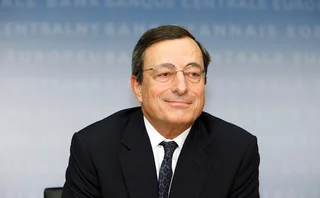
Issing believes the ECB was dragged into ‘monetary financing’ via OMTs due to political failings and should never have been in the troika that arranged the bailout of Greece in the first place. He has also stated that supervision was thrust upon the central bank, which is now conflicted on collateral and resolution rules, despite trying to ensure its actions are undertaken for the right reasons. While Issing accepts that quantitative easing is a legitimate operation for a central banks, he says that the ECB is buying corporate debt “close to junk” and “some haircuts could barely deal with a one-notch credit downgrade,” meaning the ECB’s “reputational risk has risen dramatically”.
In addition, Issing believes the positive benefits of ultra-loose monetary policy pursued by the ECB via quantitative easing combined with forward guidance are fading and the risks from the policy are increasing. “The idea of installing a politically controlled mechanism on the fiscal policy of member states via the Stability and Growth Pact has more or less failed,” Issing told Central Banking in 2016. “Market discipline is done away with by ECB interventions. So, there is no fiscal control mechanism from markets or politics. This has all the elements to bring disaster for monetary union.”
A house of cards?
Yet Issing is far from convinced that the euro doomed.
He believes that if politicians admit there will be no political union for some years, and there is a shift back towards fiscal rules and a credible ‘no bailout’ clause for banks, in time monetary union would work. As Issing says, “governments should ensure solid public finances” and if the fiscal and monetary authorities “both did their jobs” there would be “no talk of fiscal and monetary policy conflict”.
There is little evidence this is likely to transpire any time soon. Some of the loudest voices in Europe are calling for a mutualisation of public debt and deposit insurance schemes with political union to follow. Germany has resisted such overtures so far. As a result of the impasse, Issing believes the “euro area will muddle through from one crisis to another”, “governments will pile up more debt” and then one day “the house of cards will collapse”.
Given his gloomy prognosis, one might expect Issing to turn his thoughts elsewhere. But this would run against the grain of his nature. The German economist sees it as his public duty to speak out in a constructive manner and argue vigorously for change in Europe. At the same time, he continues to share his technical expertise with the next generations of central bankers.
A focus on communication

Last year, Issing released his latest book, The long journey of central bank communication, which discusses the evolution of central bank communication. In this work, he details how transparency gained importance in central banking as many institutions moved away from secretiveness towards greater openness and accountability. He describes how transparency can be used to make monetary policy more effective, detailing the evolution of more open communication to steer expectations. In the book, he also highlights the obligations of accountability and transparency while stressing that the central bank’s message to the public should prioritise the stability of the currency.
Since 2006, Issing has also served as president of the Center for Financial Studies, an independent research institute affiliated to the Goethe University Frankfurt. The centre frequently arranges debates on topics of interest to central banks and involves the wider policy, markets, academic and business communities, from Germany and internationally. Dombret’s last official speech before his farewell speech at the Bundesbank took place at the CFS, and the Bundesbank actively participates in annual events, often with Issing acting as a moderator. Recent guests have included Agustín Carstens and Jim Yong Kim.
Issing has also acted as an important counsel to Weidmann. “Since I took office here, I would say he is one of my most valuable ‘sparring partners’ regarding former colleagues,” says Weidmann. “He is someone who has preserved a very vivid interest in monetary policy, who is still up to date with the economic literature and has the unique capability of linking the academic literature with practical needs. So, for me, he is a very valuable adviser.”
Back into the fray
While Issing has criticised developments at the ECB, he has tended to limit his public interventions, used tempered language, supported his assertions with academic study and striven to offer practical solutions. However, when Draghi last year committed the ECB to further monetary loosening in his last major act as president, it prompted a highly critical response from Issing, alongside five other top former central bankers, namely, Jürgen Stark, Hervé Hannoun, Klaus Liebscher, Helmut Schlesinger and Nout Wellink, with de Larosière and Christian Noyer sharing the group’s judgement.
“The recent slowdown in economic activity, although regarded as temporary by the ECB itself, and risks due to Brexit and the trade war, have prompted the ECB to resume net asset purchases and further reduce the already negative deposit rate. Moreover, the ECB has committed itself to pursuing this extremely accommodative path for quite some time yet,” the six former top European central bankers wrote in a joint statement. They then identified six areas of “concern” about the ECB’s loosening of monetary policy.
The move was highly unusual and came following splits within the governing council and board members over the ECB’s efforts to stimulate prices and the economy through quantitative easing. The fact that Issing spoke out publicly against the decision of the governing council indicates the extent of his concern about the risks of a further extension of QE and negative rates.
Courage of his convictions
Some might see Issing’s objections to ECB policy and its expanded remit as representing a thorn in the side of current ECB policy-makers. However, he is still highly respected by top ECB officials, perhaps due to his overriding goal of supporting the ECB in succeeding in its mandate. “He deeply cares about central banking, but does not impose himself on others. He has his beliefs, and he argues his beliefs. He is not looking for headlines – he is looking for the sound argument. That is why he is liked so much. Anyone that has worked with him speaks of him very highly. The respect for Otmar Issing could not be higher in all circles that I know. He is a star in central banking,” says Dombret.

Issing is also respected for his courage.
He is possessed of a deep sense of obligation to express his views on a topic, even, indeed perhaps more so, when his view contradicts the perceived wisdom of the time. “He has a great quality: he speaks up and will never agree on a decision contrary to his firm beliefs,” says de Larosière. “[Issing is] completely objective in his assessments – he does not hesitate under pressure to stick to his position.”
The late Martin Feldstein, chief economic adviser to former US president Ronald Reagan and a vocal critic of Emu, put it this way in a speech in 2006: “The courage to stick with your beliefs, your convictions, the courage to speak about them publicly even when they are not popular, and the courage to act on them even if they will cause economic pain in the short-run if you are convinced that they are the right policies for the longer-run. I think Otmar Issing has demonstrated that kind of courage, as did Paul Volcker in the most difficult period for US monetary policy during my lifetime.” This courage, Feldstein said, can be “crucial for successful central banking”.
Issing has never held the highest office in central banking. Yet his intellectual input surpasses that of most central bank governors. And his impact on central banking spans the decades, with his arguments still resonating strongly today. As Weidmann says: “Otmar Issing has played – and still plays – a very important role in shaping the debate on monetary policy.” His work was essential for the successful introduction of arguably the most significant event in the post-war history of the international monetary and financial system: the introduction of the euro and the European Central Bank.
The Central Banking Awards were written by Christopher Jeffery, Daniel Hinge, Dan Hardie, Rachael King, Victor Mendez-Barreira, Alice Shen and William Towning
Only users who have a paid subscription or are part of a corporate subscription are able to print or copy content.
To access these options, along with all other subscription benefits, please contact info@centralbanking.com or view our subscription options here: subscriptions.centralbanking.com/subscribe
You are currently unable to print this content. Please contact info@centralbanking.com to find out more.
You are currently unable to copy this content. Please contact info@centralbanking.com to find out more.
Copyright Infopro Digital Limited. All rights reserved.
As outlined in our terms and conditions, https://www.infopro-digital.com/terms-and-conditions/subscriptions/ (point 2.4), printing is limited to a single copy.
If you would like to purchase additional rights please email info@centralbanking.com test test test
Copyright Infopro Digital Limited. All rights reserved.
You may share this content using our article tools. As outlined in our terms and conditions, https://www.infopro-digital.com/terms-and-conditions/subscriptions/ (clause 2.4), an Authorised User may only make one copy of the materials for their own personal use. You must also comply with the restrictions in clause 2.5.
If you would like to purchase additional rights please email info@centralbanking.com test test test




